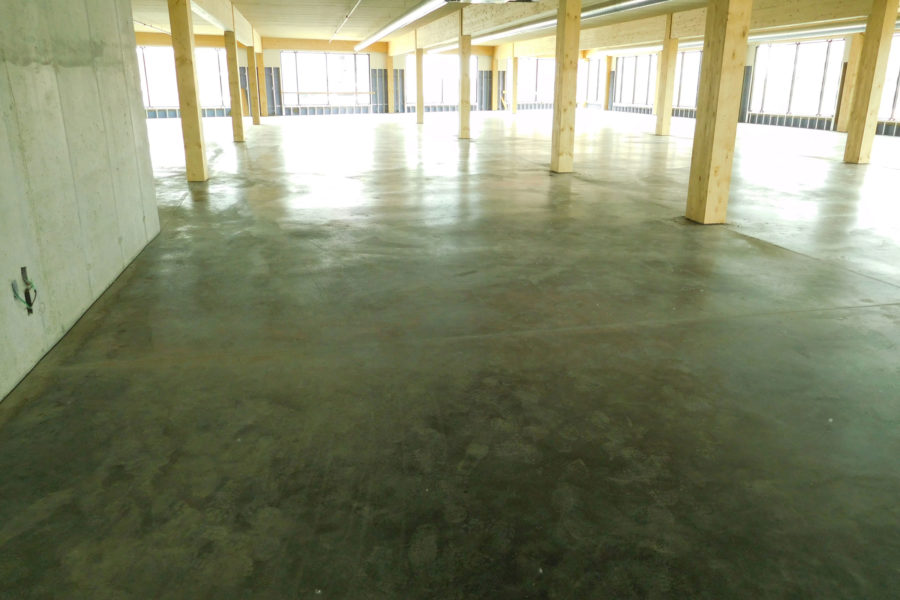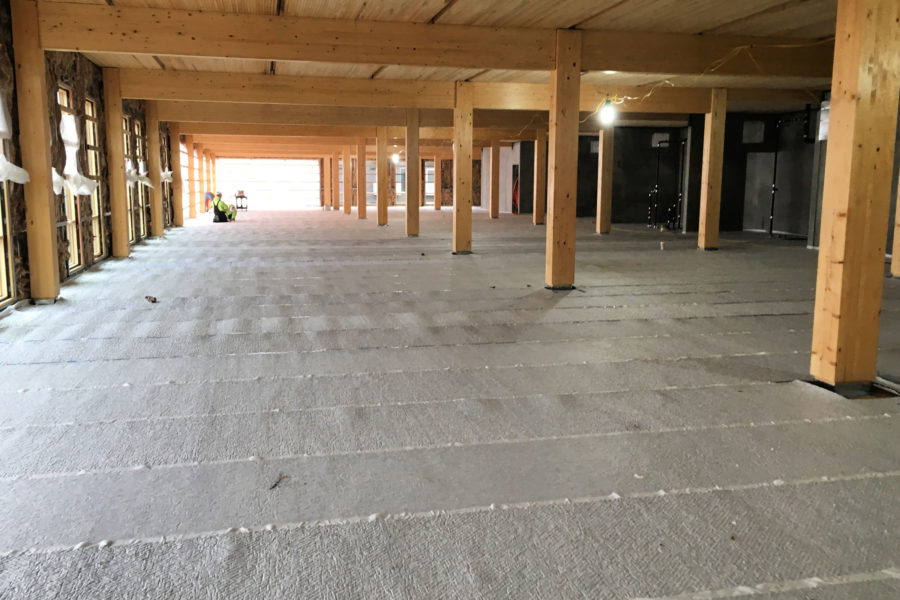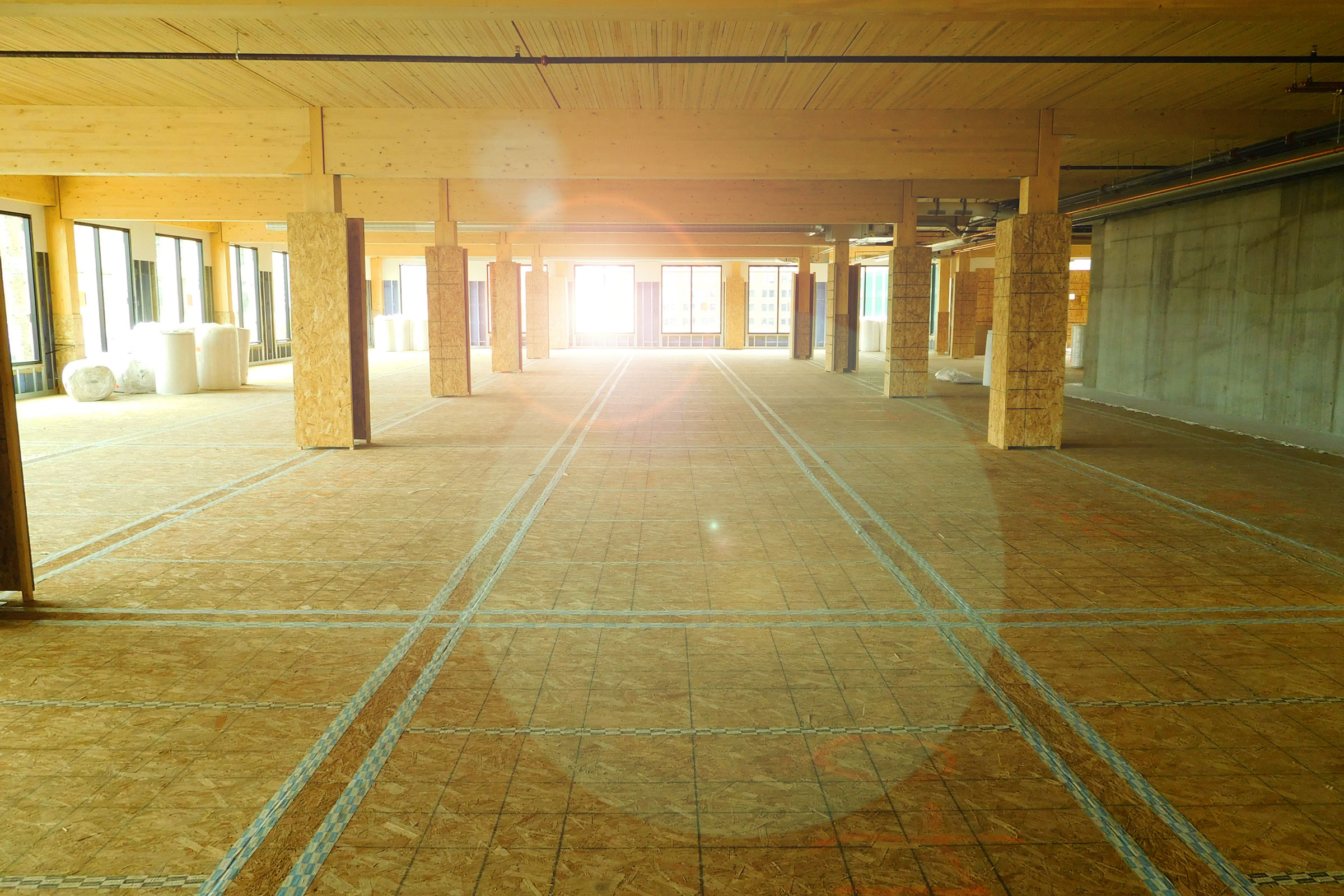Throughout its nearly half-century in business Maxxon®, the creator of Gyp-Crete®, has been North America’s premiere source of top-quality gypsum underlayments. Versatile and solution-forward, the company’s innovative products for commercial and multifamily structures aren’t merely used for leveling purposes in renovations and new construction. They’re also excellent for improving the acoustical quality of any building, including spaces that use primarily mass timber and concrete. That pairing can look great, but it’s problematic for sound dampening purposes. Erik Holmgreen, Maxxon’s vice president of research and development, explains how to remedy that issue.
The benefits of mass timber construction are many. It’s beautiful. It’s sustainable. And it’s more quickly assembled. But there’s one major challenge: Sound control is always an issue when the mass timber is left exposed on the ceiling.
Unwanted noise, as those who’ve endured stomping upstairs neighbors can attest, can adversely affect the happiness and well-being of residents. A Maxxon Acousti-Mat® sound mat topped with a Gyp-Crete® underlayment can help by offering a high-performance sound control system that doesn’t affect aesthetics.

A Maxxon Acousti-Mat sound control system adds an air gap to reduce structure-borne vibrations and mass to block airborne sound transfer through the floor/ceiling assembly. Photo courtesy of Maxxon
Typically a sound control system is only used in residential construction to meet International Building Code. This is because, in commercial concrete construction, no sound control system is required to meet accepted light commercial acoustic levels, usually a STC & IIC 40-45.
Mass timber commercial spaces often feature beautiful wooden ceilings paired with a polished concrete floor. It looks really cool, but it creates an environment where the concrete wants to ring and the timber has insufficient mass to dampen it. Thus, to meet traditional commercial acoustic levels in this environment, sound control systems are a necessary component.

Photo courtesy of Maxxon
The reason sound control in mass timber is such a challenge is because a traditional ceiling adds mass and air space—two critical components in reducing sound transfer. In mass timber the goal is to show off the beautiful wood ceiling, so sound reduction must be achieved on the floor side of the assembly. A Maxxon Acousti-Mat sound control system adds an air gap to reduce structure-borne vibrations and mass to block airborne sound transfer through the floor/ceiling assembly.
Maxxon has conducted more than 300 sound tests in the most common types of mass timber assemblies and has designed a variety of sound control systems to meet commercial and residential noise reduction requirements.


